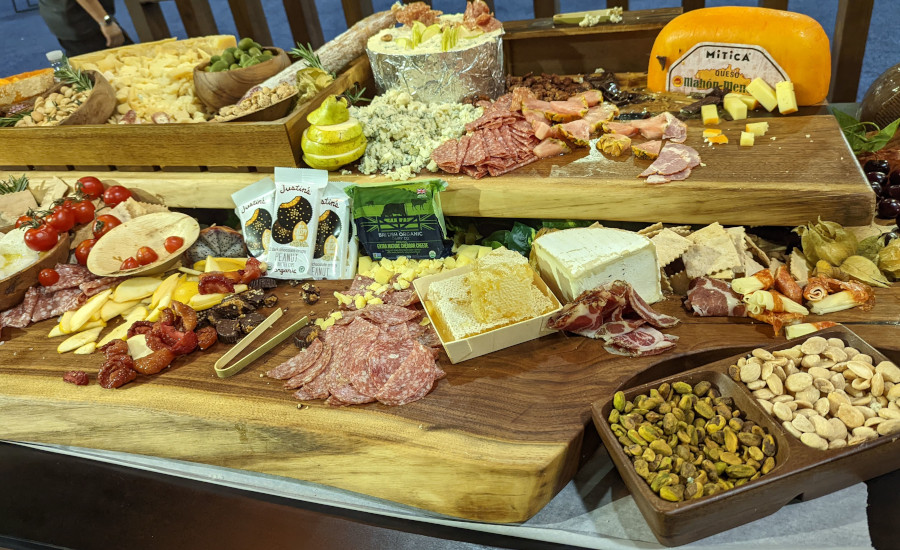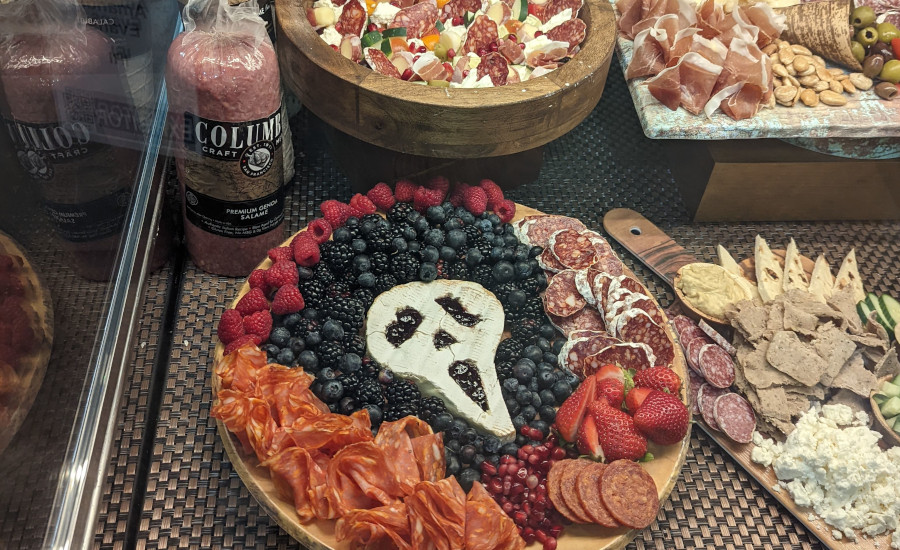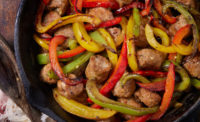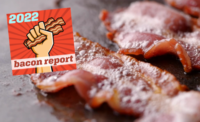Overall packaged lunchmeat is growing dollar sales faster than deli lunchmeat, with packaged lunchmeat appealing to consumers looking for value as grocery prices keep rising. Among low-income households, 61% say they are extremely concerned about food price inflation, and 36% somewhat concerned, according to data analytics and market research firm IRI.
“Consumers are still feeling the effect of cooking fatigue, but 80% of meals are still being made at home, said Amanda Evans, consultant for Client Insights at IRI. “Lunchmeat offers consumers solutions for not only fighting cooking fatigue but an affordable meal solution as many consumers are concerned about inflation.”
Underscoring shoppers’ prioritization of value-priced options, Evans said private-label brands are outpacing branded offerings in both the deli lunchmeat and packaged lunchmeat categories. For packaged lunchmeat, dollar sales are up 10.7%, while total brands are up 8.6%, Evans said. Deli lunchmeat private label is up 9.3%, and branded products are up 3.3%.
Packaged lunchmeat
Packaged lunchmeat includes sliced and unsliced lunchmeat that is placed in the refrigerated area of the store often by fresh or processed meat or refrigerated meals/sides.
Packaged lunchmeat has been enjoying strong sales, raking in $5.7 billion dollars in the past year, said Anne-Marie Roerink, principal at 210 Analytics.
“That’s been an incredibly successful area ever since the start of the pandemic,” Roerink said.
A big driver of packaged lunchmeat’s strong retail sales has been all the dining occasions that moved to the home due to the pandemic — and in many cases have remained there, she said. While many children’s lunches that had moved from school cafeterias to the home during the pandemic have gone back to school, many people have never returned to the office post-pandemic.
New uses for lunchmeat also are powering demand, with people expanding the sandwich-making staple’s culinary role by using it as a dinner protein or as a snack, Roerink said.
“There’s a lot of people who are looking for cost-effective ways to make the end-of-the-month budget meet, and so for a lot of consumers that means that instead of an elaborate meal they may be eating some sandwiches,” she said.
Evans agreed, saying, “Pricing is impacting consumers. Buyers are switching away from the service counter to packaged lunchmeat, which offers consumers a better price value.”

Deli lunchmeat
Deli lunchmeat includes service counter lunchmeat cut in store by a clerk, grab-and-go packs from the service area but prepackaged in a bunker, and pre-sliced deli/UPC items typically shelved in deli.
Deli lunchmeat has enjoyed sales of $7.8 billion in the past year, Roerink said, up 5.5%. Pounds sold were similar to year-ago levels.
She said trends driving this growth are consumption occasions moving to the home but also consumers re-creating high-end restaurant deli-style sandwiches at home.
Deli meat in pre-sliced typically 1-pound grab-and-go packs was enjoying strong sales pre-pandemic. Sales have since exploded with triple-digit growth, due in part to service centers being closed during the pandemic coupled with shoppers wanting to get in and out of the store faster, she said.
“Retailers have gotten very smart about having a variety of top-selling cuts in those grab-and-go packages,” she said, adding that can include putting different deli meat varieties in the same 1-pound package.
Service counter deli meat sales for the previous 52 weeks in late April 2022 were $4.8 billion, Roerink said. Many grocery store delis are dealing with labor availability issues, with some having to cut hours or reduce the size of the counter.
Service counter total sales are flat as consumers are opting for grab-and-go options that offer more convenience, Evans said.
“Grab-and-go sales are $2.3 billion and are up 17.7%, with the biggest growth for absolute dollar sales from turkey, ham, and beef,” she said. “Pre-sliced deli has $810 million in sales and is up 6.8%. This segment is the highest priced per pound in the deli, at $14.85.”

Evans said deli entertaining has been growing too because it makes lunch, snacking, and hosting easy with ready-to-go solutions, with party trays proving particularly profitable.
“Meat/cheese and only-meat trays offer so many sizes it gives consumers ready-to-serve options for snacking to large parties,” Evans said. “The meat-only trays offer retailers a premium-priced product at $19.37 per pound, which is priced 67% higher than trays and 102% higher than deli meat. Rather than retailers just offering deli lunchmeat in a bag, offering it on a tray ready to serve can drive premium pricing.”
Favorite flavors
“We continue to see the powerhouses of turkey and ham generate the vast majority of sales,” Roerink said, “but at the same time we’re seeing people have a lot of fun with those powerhouses.”
Coatings such as different herbs on the outside or infusions also are influencing deli meat, whether turkey, ham, beef or chicken, she said.
“Turkey is interesting because it is growing across service, grab and go, pre-sliced deli and packaged lunchmeat,” Evans said. “Most other types of meat are only growing in one or two areas of lunchmeat. Turkey does a great job of bringing in flavors in the deli and offering consumers a value in the packaged area. “
National Turkey Federation said that despite Inflation deli remains a strong market segment for turkey products. As consumers continue cooking at home and cost-conscious shoppers focus on value, turkey deli meat offers flavor profiles that are increasingly popular.
Evans also noted that consumers have an increasing array of turkey deli met flavor options, with the biggest growth coming from peppered, mesquite, hickory, honey, sundried tomato and Cajun.
Evans said a recent hit to the supply chain impacting this deli favorite has been avian influenza, which has massively impacted the number of birds in the supply chain and will be an ongoing issue for the remainder of the year. She said there may start to be slowing growth of chicken and turkey as limited supply pushes manufacturers to prioritize which poultry products to keep in production. Other proteins such as pork and beef might start to see benefits from the limited poultry supply. Even though the impact of avian influenza has started to hit the market with elevated pricing on poultry, consumers’ demand for chicken and turkey has not slowed, she said.

.png?height=96&t=1647275041&width=96)



Report Abusive Comment